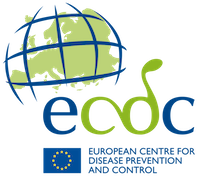Are European laboratories ready to detect COVID-19?
A first assessment looking at the preparedness of EU/EEA laboratories to detect severe acute respiratory syndrome coronavirus 2 (SARS-CoV-2) demonstrates a fast implementation of molecular diagnostics by the European specialised laboratory networks. It also shows a good geographical coverage for testing.
In January 2020, a survey among laboratories to assess the capacity and quality for SARS-CoV-2 (previously 2019-nCoV) diagnostics as well as implementation barriers was conducted. The data provided by 47 laboratories in 30 EU/EEA countries were taken into account in a study released by Eurosurveillance.
The laboratories were asked to indicate their weekly capacity for molecular testing for SARS-CoV-2. Of the 47 participating laboratories, 38 indicated a capacity of minimum 8 275 tests per week.
At the time of the survey, an additional eight laboratories were in the process of implementing molecular diagnostics and these laboratories would, all combined, add a minimum capacity of 875 tests per week once this process would be complete.
Furthermore, the survey indicated a great willingness of laboratories to provide international diagnostic support and to share sequences to contribute to the monitoring of virus evolution and trace transmission chains.
The main challenges for test implementation were an initial lack of positive control, lack of personnel/time and a lack of primers and/or probes.
Read the full assessment
Laboratory readiness and response for novel coronavirus (2019-nCoV) in expert laboratories in 30 EU/EEA countries, January 2020
A first assessment looking at the preparedness of EU/EEA laboratories to detect severe acute respiratory syndrome coronavirus 2 (SARS-CoV-2) demonstrates a fast implementation of molecular diagnostics by the European specialised laboratory networks. It also shows a good geographical coverage for testing.
Latest updates
Further reading
Surveillance and monitoring
Communicable disease threats report, 19 - 25 April 2025, week 17
This issue of the ECDC Communicable Disease Threats Report (CDTR) covers the period 19-25 April 2025 and includes updates on respiratory virus epidemiology in the EU/EEA, influenza, avian influenza, poliomyelitis, and chikungunya virus disease.
Surveillance and monitoring
Communicable disease threats report, 29 March - 4 April 2025, week 14
This issue of the ECDC Communicable Disease Threats Report (CDTR) covers the period 29 March - 4 April 2025 and includes updates on SARS-CoV-2, Influenza A(H5N1), chikungunya, Ebola and an overview of respiratory virus epidemiology in the EU/EEA.
Surveillance and monitoring
Does COVID-19 vaccination reduce the risk and duration of post COVID-19 condition?
This report addresses whether COVID-19 vaccination also reduces the risk and/or duration of a wide range of post-acute COVID-19 symptoms, commonly referred to as ‘long COVID’.
Surveillance and monitoring
Communicable disease threats report, 15 - 21 March 2025, week 12
This issue of the ECDC Communicable Disease Threats Report (CDTR) covers the period 15 - 21 March 2025 and includes updates on cholera, Middle East respiratory syndrome, an overview of respiratory virus epidemiology in the EU/EEA, avian influenza, chikungunya, Ebola, and the risk of severe infections, carriage and cross-border transfer of carbapenem-resistant bacteria in victims of the fire at Pulse nightclub in North Macedonia.
Surveillance and monitoring
Communicable disease threats report, 8 - 14 March 2025, week 11
This issue of the ECDC Communicable Disease Threats Report (CDTR) covers the period 8 - 15 March 2025 and includes updates on respiratory virus epidemiology in the EU/EEA, Legionnaires' disease, chikungunya, mpox, Marburg virus, and Ebola.





